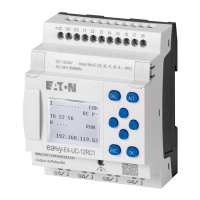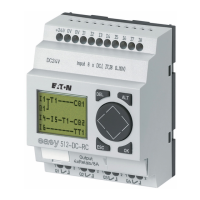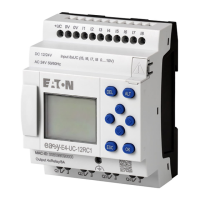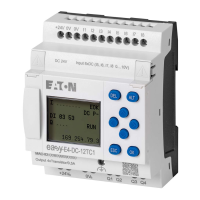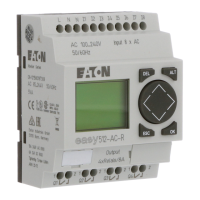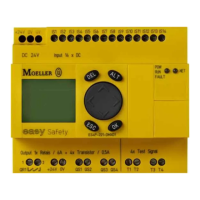9 Inside 800
9.5 Time behavior of the inputs and outputs
322 Control Relay easy800 11/11 MN04902001Z-EN www.eaton.com
When the DC voltage signal drops out from 1 to 0 and DEBOUNCE is active,
the same delay time (C) of 20 ms is applied before the signal is transferred to
the next circuit diagram cycle. For this the input signal S1 must be < 5 V at
the input terminal.
Delay time with DEBOUNCE deactivated
When DEBOUNCE is deactivated, the typical delay time for DC signals on
the input for easy800 standard caused by the hardware lies between
0.025 ms and 0.25 ms (A). The delay time for EASY806-DC-SWD is 0.02 ms.
The cycle time (B) here must be added as well before the signal is safely
transferred to the circuit diagram.
Figure 213:Switching behaviour with DEBOUNCE deactivated
Typical delay times with DEBOUNCE deactivated are:
• Switch-on delay for:
• I1 to I4 easy800 standard: 0.025 ms
• I1 to I4 EASY806-DC-SWD: 0.02 ms
• I5 to I12: 0.25 ms
• Off-delay for:
• I1 to I4 easy800 standard: 0.025 ms
• I1 to I4 EASY806-DC-SWD: 0.02 ms
• I5, I6 and I9 to I10: 0.4 ms
• I7, I8, I11 and I12: 0.2 ms
→
When using high-speed counter function blocks, the delay time
for the input signals must not exceed 0.025 ms.
DEBOUNCE must therefore be deactivated.
→
When DEBOUNCE is deactivated ensure that input signals are
free of noise. The easy800 device responds to very short
signals.
→
To allow reliable recognition and processing of the input signal,
it must be applied stably for a certain duration, the length of
which depends on the circuit diagram processing cycle time.
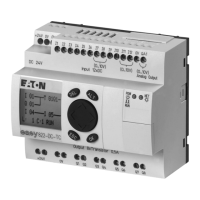
